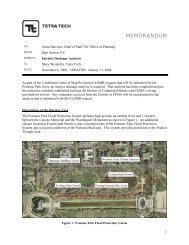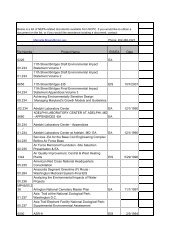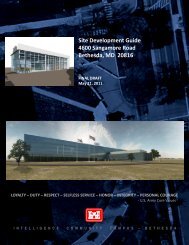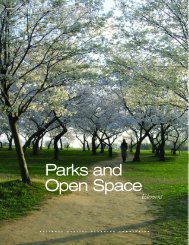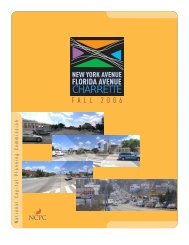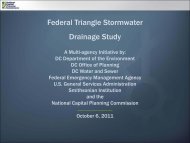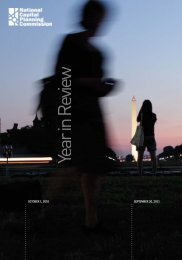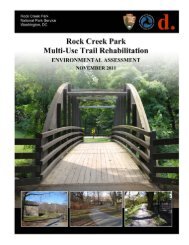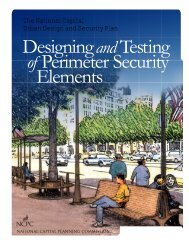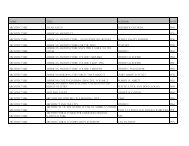UNITED STATES DIPLOMACY CENTER - National Capital Planning ...
UNITED STATES DIPLOMACY CENTER - National Capital Planning ...
UNITED STATES DIPLOMACY CENTER - National Capital Planning ...
Create successful ePaper yourself
Turn your PDF publications into a flip-book with our unique Google optimized e-Paper software.
3.1 GEOLOGY<br />
AFFECTED ENVIRONMENT<br />
The project area is located within the Coastal Plain Physiographic Province of the District of Columbia.<br />
The Coastal Plain consists of a seaward thickening wedge of unconsolidated to semi-consolidated<br />
sedimentary deposits from the Cretaceous Geologic Period to the Holocene Geologic Epoch. These<br />
deposits represent marginal-marine to marine sediments consisting of interbedded sands and clays. The<br />
Coastal Plain is bordered to the east by the Atlantic Ocean and to the west by the Piedmont Physiographic<br />
Province (GeoConcepts, 2011).<br />
The existing fill soils of the top-most layer of soil are believed to be related to previous site grading. The<br />
natural soils assigned to the lower soil layers are believed to be Alluvial deposits associated with the<br />
nearby Potomac River and its tributaries. The alluvial soils are underlain by bedrock, which was<br />
encountered at about 51 to 53.5 feet depth below the existing ground surface (GeoConcepts, 2011).<br />
ENVIRONMENTAL CONSEQUENCES: ACTION ALTERNATIVE<br />
Implementation of the Action Alternative would result in long-term, minor impacts to the site’s geology,<br />
due to the construction of the Entry Pavilion’s lower level and an increase in structural load that would<br />
require increased stabilization.<br />
Both shallow and deep foundations have been evaluated for support of the Entry Pavilion. The existing<br />
fill and alluvial soils underlying the site exhibit low to moderate shear strength and high compressibility<br />
characteristics. Accordingly, the use of conventional spread footing foundations, bearing directly upon<br />
these existing fill and alluvial soils, is not recommended for support of the proposed construction. The<br />
Entry Pavilion could be supported on spread footings bearing on soils improved with aggregate piers, or<br />
caissons bearing on bedrock. Spread footings may be used to support the building, when founded on soils<br />
improved by aggregate piers; if improved by aggregate piers, spread footings could increase the allowable<br />
bearing pressure for the design of spread foundations to 4,000 pounds per SF. If used, caisson<br />
foundations bearing on bedrock would extend through the upper soils of Strata A and B to bear on the<br />
bedrock. Lower floor slabs, supported by natural soils or new compacted fill, would be feasible at the<br />
site; however, where floor sub-grades consist of existing fill, it is recommended that existing fill be<br />
undercut to a depth of at least two feet and backfilled with new compacted fill. It is recommended that<br />
the floor slab be isolated from the footings so that differential settlement of the structure would not induce<br />
shear stresses on the floor slab. The final selection of a foundation system would be based on an<br />
economic/construction schedule comparison of the aforementioned options by the general contractor or<br />
cost estimator (GeoConcepts, 2011).<br />
ENVIRONMENTAL CONSEQUENCES: NO ACTION ALTERNATIVE<br />
Under the No Action Alternative, impacts to geology would be negligible.<br />
40



